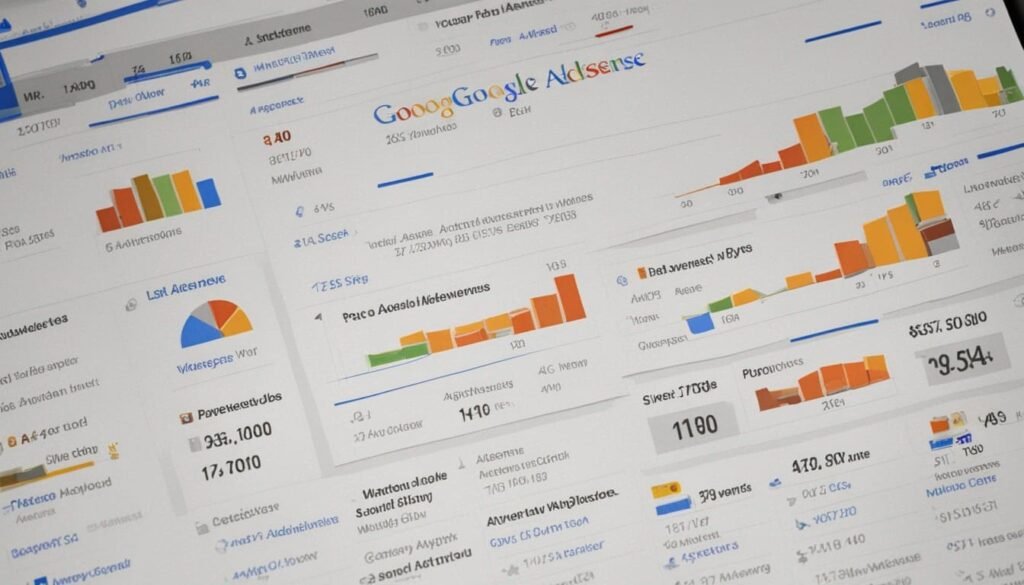If you are monetizing your website or blog with Google AdSense, understanding the key metrics driving your earnings is essential for effective optimization. Metrics like RPM, CTR, and CPC are crucial indicators that help you analyze your ad performance, interpret revenue trends, and make smart decisions to increase your Google AdSense income in 2025.
This comprehensive guide breaks down these important metrics in simple terms, explains how they interact, and offers practical advice to improve each for maximum monetization success.
What Is CPC (Cost Per Click)?
Cost Per Click (CPC) is the amount advertisers pay you each time a visitor clicks an ad on your site. It varies widely depending on niche, keyword competition, and advertiser demand.
-
A higher CPC means more money earned per click.
-
Popular niches like finance, insurance, and technology tend to have higher CPC rates.
-
Your content’s relevance to high-paying keywords can influence CPC values.
Knowing your average CPC helps you understand the value of each click and identify which content brings higher-paying ads.
What Is CTR (Click-Through Rate)?
Click-Through Rate (CTR) is the percentage of visitors who click on the ads displayed on your website.
CTR=(Total Ad ClicksTotal Ad Impressions)×100
For example, if 1,000 ad impressions generate 20 clicks, the CTR is 2%. A higher CTR indicates better ad engagement by your visitors.
-
Placement, design, and relevancy of ads influence CTR.
-
Ads placed within content or near eye-catching sections typically yield higher CTR.
-
However, maintaining a balance is critical to avoid overwhelming users with ads.
Improving CTR usually means better ad integration with content and user behavior understanding.
What Is RPM (Revenue Per Mille or Revenue Per Thousand Impressions)?
RPM is the estimated revenue you earn per 1,000 ad impressions.
RPM=(Estimated EarningsNumber of Impressions)×1000
RPM reflects overall ad monetization and is not just about clicks but also ad impressions.
-
RPM helps you measure how effectively your traffic is being monetized beyond click numbers.
-
Factors affecting RPM include CPC, CTR, ad format, visitor location, and device.
-
A higher RPM means you are making more money for every 1,000 page views.
Tracking RPM over time gives insights into the health of your monetization strategy.
How These Metrics Interrelate
Your AdSense revenue depends directly on CPC and CTR, with RPM summarizing the overall revenue performance normalized per 1,000 views.
-
Revenue calculation formula:
Revenue=Impressions×(CTR100)×CPC
-
If CPC is high but CTR is low, you may have high-paying ads but poor engagement.
-
If CTR is high but CPC is low, you get many clicks but less payout per click.
-
Balancing both while optimizing for higher RPM is the key to maximizing earnings.
Tips to Improve CPC, CTR, and RPM
Enhance Content Quality and Relevance
-
Create targeted content using high CPC keywords through keyword research.
-
Use long-tail keywords with a clear commercial intent.
Optimize Ad Placement and Formats
-
Experiment with placement above the fold, inside content, and below posts.
-
Use responsive ads tailored for mobile and desktop.
-
Avoid clutter to maintain user experience.
Increase Quality Traffic
-
Drive organic traffic from well-targeted sources.
-
Avoid traffic sources with low engagement or suspicious behavior.
Use Analytics to Monitor Performance
-
Use Google AdSense reports and Google Analytics to track how each metric performs across your site.
-
Conduct A/B tests for different ad layouts to find optimal setups.
Reference: Google AdSense Official Help
For detailed definitions and reporting guidance, refer to the official Google AdSense Help page on understanding AdSense metrics and reports.
Read More: A/B Testing Ad Layouts to Maximize AdSense Click-Through Rates in 2025
Conclusion
Mastering key Google AdSense metrics like CPC, CTR, and RPM empowers website owners to analyze their monetization performance comprehensively. Understanding what drives each metric and how they interplay helps you fine-tune your content, ad placements, and traffic strategies for increased revenue.
Tracking these metrics consistently and applying data-driven optimizations ensures you stay competitive and profitable in the evolving digital advertising landscape of 2025.

